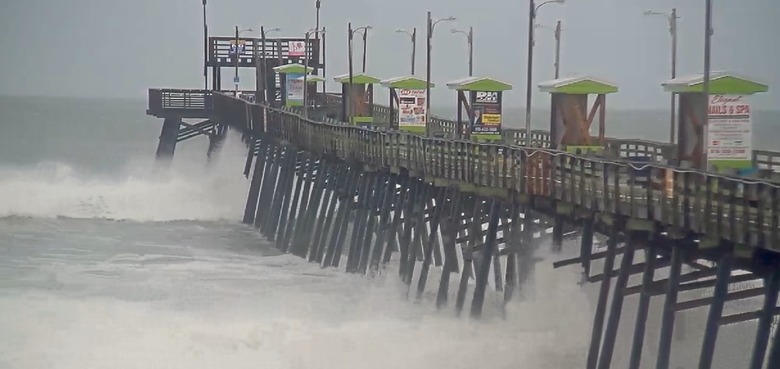Scientists Want AI To Help Predict Dangerous Hurricanes
- A team of scientists, including those at NASA's Jet Propulsion Laboratory, has developed an artificial intelligence algorithm to predict the rapid intensification of tropical storms and hurricanes.
- The system is far more accurate than the current model and has a low rate of false positives.
- If used in the future, it could save lives by predicting strong storms well in advance.
With the southern United States still dealing with the effects of a pair of intense storms that arrived almost simultaneously, now is as good a time as ever for scientists to weigh in on the future of hurricane forecasting. In a new paper published in Geophysical Research Letters, scientists using data gathered by NASA satellites explain how algorithms can spot the telltale signs of a storm that's about to become much more powerful.
Being able to predict the intensity of a storm as it is brewing is incredibly difficult. There are many factors at play, but NASA's Jet Propulsion Laboratory has honed in on a few key variables that an AI algorithm could search for in order to make an accurate prediction.
As JPL explains, the researchers have determined that a spike in the rainfall near the core of the storm is a good indicator that the storm is gearing up for something big. On top of that, the intensity of the storm can be judged in part by the amount of water ice present in the hurricane's intense cloud formations. The more powerful the winds, the greater the odds that water will be carried high enough to turn to ice.
The good news here is that these are things that can be sniffed out by NASA's own satellites, and pairing those satellites with an AI program to act as a watchdog could produce a useful early warning system for those in the path of a storm that's about to get a whole lot more powerful.
In testing their new framework for predicting changes in storm intensity, the researchers found that it was between 40% and 200% more accurate than the standard method for predicting rapid intensification (or RI for short). On the other end of the spectrum, the rate of false positives was only 4% to 7% higher. That's a pretty dramatic improvement with very little risk downside.
Hurricanes and other tropical storms don't exactly "sneak up" on anyone anymore. We have plenty of data to show when and where a hurricane is likely to strike. However, predicting the intensity of the hurricane when it reaches land is still largely a guessing game. If artificial intelligence combined with satellite data can change that in a meaningful way, it could save a lot of lives in the process. There's still more work to be done before AI can be unleashed to predict the weather, but things are looking promising.
